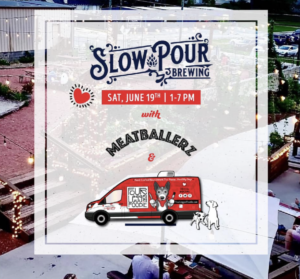The mobile food industry has gone to the dogs—literally. And that’s a good thing. As pet owners increasingly seek premium, fresh food options for their furry companions, mobile dog treat businesses are carving out a lucrative niche in the food truck market. A few years ago, M&R Specialty Trailers and Trucks had the opportunity to convert a Sprinter truck for Four Legged Foodie, a dog treat business based in Atlanta that has since expanded into a brick-and-mortar location. Their journey offers valuable insights on how you can start your own mobile dog treat venture and grow it into something even bigger.
The Business Concept: Why Mobile Dog Treats Work
The pet industry continues to boom, with Americans spending over $136 billion annually on their pets. Increasingly, pet owners are seeking fresh, high-quality food options for their dogs. A mobile dog treat business offers several advantages:
- Lower startup costs compared to a brick-and-mortar store
- Ability to test different locations and follow your customer base
- Opportunity to build a loyal following at dog parks, pet events, and farmers markets
- Flexibility to adapt your menu based on customer feedback
As I witnessed with Four Legged Foodie owners Tatiana and Deborah, the enthusiasm for their concept was palpable. Their business focuses on “fresh food with great quality,” targeting health-conscious dog owners who want premium options for their pets. Their mission statement captures this perfectly: “We are dedicated to sustainability, minimizing waste, and producing the highest quality recipes and products.”
The business was created to honor the legacy of a beloved pet, and this personal connection has helped them build an authentic brand that resonates with fellow dog lovers. Their commitment to quality is evident in their use of human-grade ingredients and collaboration with veterinary nutrition experts to ensure their recipes provide balanced nutrition.
Equipment Essentials for Your Dog Treat Mobile Unit
When converting a vehicle into a dog treat business, several key equipment considerations come into play. Based on the Four Legged Foodie truck we recently completed, here are the essential components:
1. The Vehicle
The Four Legged Foodie owners chose a Sprinter truck for their conversion, which offers an excellent balance of space and maneuverability. Other options include:
- Food trailers: Lower initial investment, requires tow vehicle
- Step vans: More interior space, classic food truck look
- Sprinter vans: Fuel efficient, easier to drive in urban settings
2. Kitchen Equipment
The Four Legged Foodie truck features:
- Commercial-grade refrigeration for keeping fresh ingredients and prepared treats cool
- Small batch preparation equipment including mixers and food processors
- Food-safe preparation surfaces that meet health department standards
- Specialized baking equipment for dog treats and biscuits
- Hand washing station (required by health departments)
- Storage solutions for ingredients and packaging
3. Customer Service Area
A critical aspect of the Four Legged Foodie design is the service window where dogs and their owners can interact with the business:
- Customer-friendly serving window at appropriate height
- Exterior awning for shade during service
- Menu display visible from the outside
- Point-of-sale system for processing payments
- Optional lower “sampling window” where dogs can receive treats
4. Branding and Visibility
The Four Legged Foodie truck features eye-catching vehicle wrapping with their branding, logo, and contact information—essential for a mobile business where your vehicle serves as a moving billboard.
Marketing Your Mobile Dog Treat Business
As Tatiana mentioned in our walkthrough video, they’ve created a website (fourleggedfoodie.com) where customers can “sniff them out” and find their current location. This highlights a critical aspect of mobile food business marketing. You need to let customers know where to find you. Effective marketing strategies include:
1. Digital Presence
- Website with your schedule, menu, and story
- Social media accounts showcasing your treats and happy canine customers
- Email newsletter for loyal customers
- Online ordering options for pre-orders or special events
2. Strategic Locations
- Dog parks during peak hours
- Pet-friendly events and festivals
- Farmers markets and outdoor shopping areas
- Partnerships with pet stores for special events
- Corporate office parks where employees bring their dogs
3. Community Building
- Loyalty programs for repeat customers
- Partnerships with local animal rescues or shelters
- “Yappy hours” or special event collaborations with breweries or restaurants with pet-friendly patios
- Seasonal specials tied to holidays or events

Four Legged Foodie partners with dog friendly breweries.
Understanding Your Target Market
The pet industry offers several distinct customer segments to target:
- Premium Pet Parents: These customers prioritize quality and health for their pets, often seeking organic, all-natural options with human-grade ingredients.
- Celebration Seekers: Pet owners looking for special occasion treats for birthdays, “gotcha days,” or holidays.
- Convenience Customers: Working professionals who value the convenience of picking up fresh treats while out with their dogs.
- Social Experience Seekers: Those who view the experience of visiting your truck with their dog as a fun outing and photo opportunity.
The Four Legged Foodie Success Story: From Truck to Brick-and-Mortar
One of the most inspiring aspects of the Four Legged Foodie journey is how they’ve expanded from their mobile beginnings to a permanent location. Their story demonstrates the potential growth path for a successful mobile dog treat business.
Overcoming Early Challenges
The path wasn’t always smooth for Four Legged Foodie. In the three years following their concept development, they faced numerous obstacles:
- They experienced a setback with their original board-certified veterinary nutritionist, but successfully pivoted by connecting with Sarah K. Abood, DVM, PhD, at Veterinary Nutritional Consultations, who helped formulate their current recipes.
- Their food truck nearly faced disaster during Hurricane Dorian while undergoing vinyl wrap installation.
- Perhaps most challenging was the regulatory confusion. As a new concept, neither the Department of Health (which typically oversees human-grade food) nor the Department of Agriculture (which oversees pet food) initially knew how to categorize them. Ultimately, they received permission to operate as registered dog food manufacturers with a Feed License issued by the State of Georgia.

This could be your happy customer base.
Making the Leap to Brick-and-Mortar
From the moment Four Legged Foodie launched their food truck, customer demand for their products was strong. They consistently heard, “My dog loves your food. How can we get more?”
By late 2022, this persistent demand led them to transition their mobile business into a permanent brick-and-mortar dining experience. With assistance from Terra Alma, they secured a 1,437-square-foot space formerly occupied by The Whole Dog Market, strategically located in Midtown Atlanta near two of the city’s premier dog-walking destinations—Atlanta’s Beltline Eastside Trail and Piedmont Park.
On December 16, 2023, after navigating several delays, Four Legged Foodie opened what they describe as the “first ever ‘restaurant’ exclusively for dogs in the US.” This innovative concept allows “PUPstomers” to order from a Beltline-facing walk-up window or come inside to experience the mouthwatering aromas.
Premium Product Offerings
What sets Four Legged Foodie apart is their commitment to quality. They define themselves as “a fresh, small batch, human-grade dog food manufacturer” dedicated to producing “hand-crafted nourishment for happy, healthy dogs using ingredients that matter.”
Their menu includes innovative items like:
- Salmon Poke (Ludafish): A highly digestible recipe rich in Omega-3 and Omega-6 fatty acids to promote healthy skin and a shiny coat. The salmon is sous vide to retain vital nutrients and minerals that support immune health, reduce inflammation, and promote healthy movement. Ingredients include salmon, organic sushi rice, wild-caught baby sardines, red cabbage, carrot, cucumber, organic wild kelp, and fresh ginger.
- Chicken + Rice (Dirty Bird): Designed for easy digestion, providing high protein with moderately low fat. The chicken breasts are sous vide to preserve nutrients, prevent antioxidant degradation, and retain essential vitamins and minerals. Ingredients include chicken breast, organic basmati rice, organic pumpkin purée, peas, carrot, organic lignan flaxseed oil, and ground turmeric.
All their recipes meet the nutritional levels established by the AAFCO Dog Food Nutrient Profiles for adult maintenance, ensuring pets receive balanced nutrition.
Conclusion
Four Legged Foodie demonstrates, a mobile food unit can be not just a business in itself, but also a stepping stone to a larger operation. Their journey from concept to food truck to brick-and-mortar “dog restaurant” illustrates the growth potential in this innovative market segment.
At M&R Specialty Trailers and Trucks, we’ve seen firsthand how concept-specific design considerations can make a significant difference in the success of mobile food businesses. Whether you’re serving humans or their four-legged companions, investing in the right equipment, understanding your market, and creating a memorable brand experience will set you on the path to success.
If you’re ready to take the next step in your mobile dog treat business journey, we’d be happy to discuss how we can help bring your vision to life—just as we did for Four Legged Foodie.
